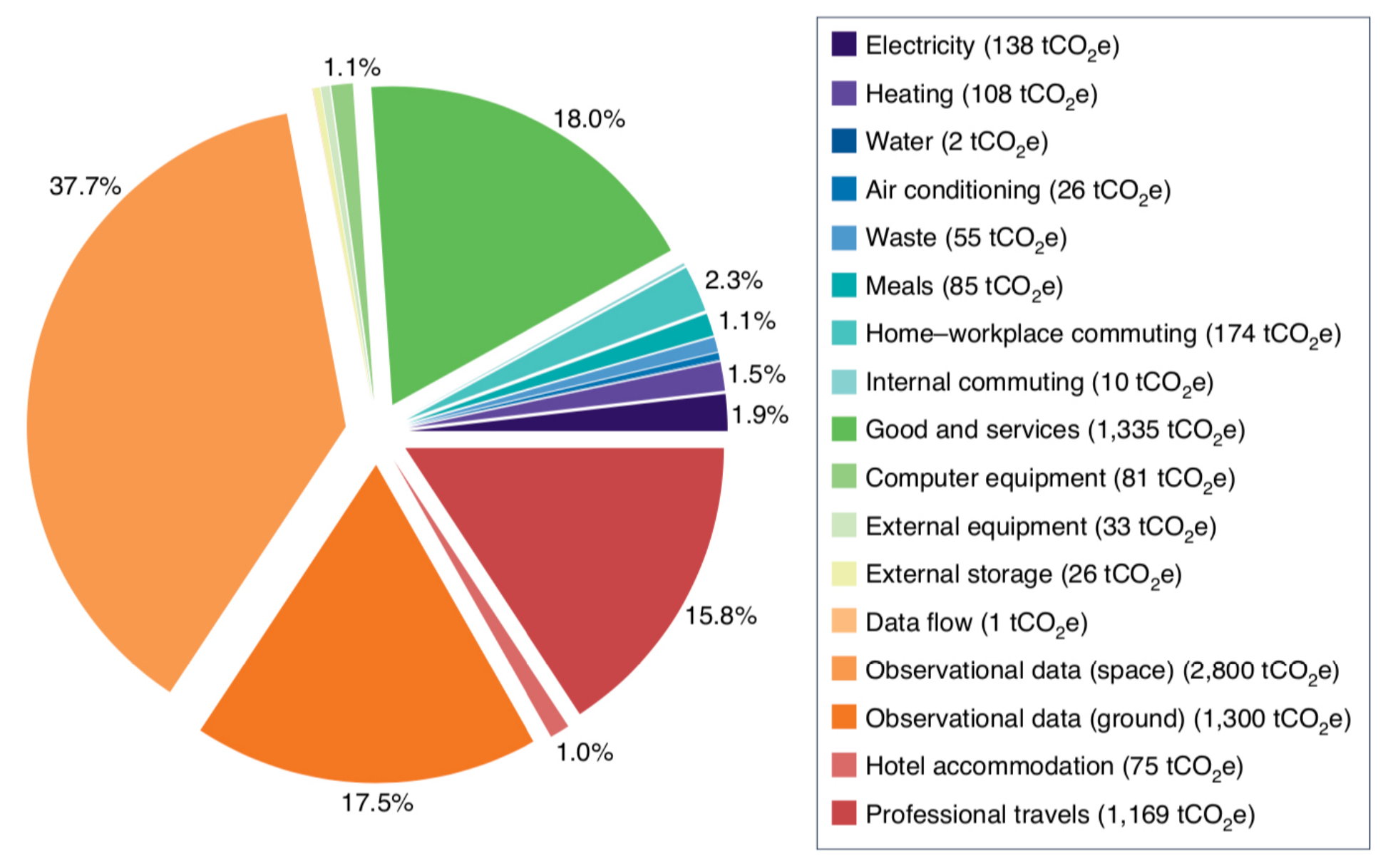The future of scientific meetings
Professional travel to events such as conferences and meetings represents a significant part of the carbon footprint of astronomical research, as can be seen, for example, in IRAP’s greenhouse gas assessment (1). Furthermore, the astronomical community is diverse and international, but this is usually not well represented at in-person events.

Figure 1 : Breakdown of IRAP’s greenhouse gas emissions in 2019 (1).
The astronomical community is currently tackling these issues. A virtual symposium “The future of meetings” was held in 2020. Its conclusions (2) have recently been taken up by Astronomers for Planet Earth (A4E) to provide guidelines for reducing the environmental impact, as well as for promoting diversity, equity and inclusion, in events organized by the community (3). A4E urges organizers to clearly define the purpose of their events, to regularly experiment with new tools and approaches, and to conduct participant satisfaction assessments. If it is concluded that an in-person meeting is necessary, A4E encourages, among other things, to offer a virtual participation option to participants who are unable or unwilling to travel, to choose the meeting venue in such a way as to minimize the environmental impact of the event and, whenever possible, to organize several events with overlapping audiences in the same area. Any choice that partially disagrees with these guidelines should be justified by the purpose of the event and transparently communicated to the community. In addition, early-career researchers and those from traditionally under-represented groups should be given priority for in-person interaction (including the allocation of funds to facilitate travel).
To take this a step further, a 2023 survey in the particle astrophysics community suggests that a reduction in the number of meetings and conferences may be a suitable way of addressing concerns about the effectiveness of the scientific collaboration process, its impact on the environment and the well-being of the community (4).

Figure 2 : Perception by the survey participants of the number of conferences available in the field of particle astrophysics. Responses are categorized according to gender, academic status and geographical area (4).
Among survey participants, 51% consider that the number of conferences is appropriate, while 39% assert there are too many. The fraction of participants who think the number of conferences is too large varies according to gender, academic status and geographical area. With the exception of students, over 25% of participants think there are too many conferences, and this fraction rises to 49% among women. Although the reasons why the number of conferences is perceived as too large vary, the solution preferred by all categories would be to reduce their number. With the exception of PhD students and postdocs, the fraction of participants who suggest reducing the number of conferences exceeds 15%, and reaches almost 29% among women and 34% among senior researchers.
Reducing the environmental impact of scientific meetings is an ongoing process, and the community must cooperate to achieve this goal. Together, we can make a positive impact and create a more environmentally friendly and inclusive future for astronomy.
Further Resources
- (1) « A comprehensive assessment of the carbon footprint of an astronomical institute« , P. Martin et al., Nature Astronomy 6, 1219-1222 (2022)
- (2) « The Future of Meetings: Outcomes and Recommendations« , V.A. Moss et al.
- (3) « Statement on Conferences and Meetings« , by Astronomers for Planet Earth
- (4) « The future of meetings in the particle astrophysics community« , L. Tibaldo et al., Nature Astronomy 7, 1408-1411 (2023)
IRAP Contact
- Luigi Tibaldo, luigi.tibaldo@irap.omp.eu






